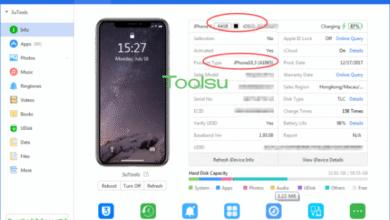Shemle Star DB: A Complete Guide to Understanding and Using It

In modern times, the world of technology is ruled by databases which drive applications, businesses as well as innovations. A term that has begun to attain some attention is . Compared to other management systems, Shemle Star DB is relatively new, and as such, is a fresh approach to data management that achieves flexibility, scaling and efficiency. This paper will consider what Shemle Star is about, why it is important and how it can be used in any industry. By the closing, you will have thorough knowledge of its functions, applicable uses and potential application of the same.
Table of contents
What is Shemle Star db?
Shemle Star DB is a newer form of database solution that can manage the current form of data. It is constructed to meet distributed systems, cloud-native operations, and large-scale performance factors unlike the traditional relational databases. Although dependent upon the specifics of implementation, the main philosophy of Shemle Star can be narrowed down to the three key areas:
- Scalability: Will allow dealing with large volumes of data non-chalantly.
- Flexibility: Is able to handle structured, semi-structured and unstructured data.
- Resilience: Designed with maximum up-time, resilience to faults and worldwide accessibility.
Important features of shemle star DB
1. Cloud-Native Architecture
Shemle Star DB works with ease in cloud environments, and this makes deployment and scaling easy. This enables businesses to scale to the increasing data demands easily.
2. Distributed Performance
Its distributed property means that queries are processed in an efficient manner across multiple nodes, and latency decreases, increasing reliability.
3. Multi-Model Support
Shemle Star DB has the capability to support multiple data models, including the key-value, graph and document models, on the same platform compared to single model databases.
4. Enhanced Security
Shemle Star is built with encryption, authentication of user, and compliance of new age cybersecurity challenges.
The advantages of Shemle Star DB
- High Availability: No single point of failure and that ensures continuous access.
- Minimization of Wastes: Pay-as-you-go in cloud minimizes wastages.
- Flexibility: Suitable to start ups, enterprises and research projects.
- Performance: Is capable of addressing real-time analytics, IoT data, and machine learning workloads.
How Shemle Star DB Stands Out to Other Databases
Relational databases (RDBMS)
Whereas RDBMS is well suited to structured data and ACID compliant transactions, they are weak in terms of scalability. Shemle Star fills this divide with distributed scalability with reliability.
NoSQL Databases
NoSQL databases, such as MongoDB or Cassandra are flexible and fast yet tend to be devoid of multi-model capabilities. Shemle Sta is the combination of excellent NoSQL flexibility and advanced integrations.
Graph Databases
Graph databases are also oriented but not very flexible. The multi-model approach of Shemle Star DBs gives access to graph functionality without constraining people to use just one model.
Shemle Star DB Use Cases
1. Real-Time Analytics
It is efficient to process vast quantities of data in real-time and therefore it is favorable in detecting fraud, insights on customers, or financial tracking.
2. IoT Applications
Scalability of Shemle Star has the ability to efficiently scale and process millions of devices that generate data.
3. AI and Machine Learning
Its potential to process both structured and unstructured data is a testament to its powerful backbone to AI models training and deployment.
4. Enterprise Resource Planning (ERP)
Shemle star DB can be integrated into ERP systems within organizations so as to enhance the data flow, reporting and decisions are made.
5. E-commerce Platforms
Scalable and reliable databases would not be a problem on online shops with a lot of visitors. Shemle Star makes checkout and personalization smooth and the experience enjoyed by customers.
Best Practices to the implementation of Shemle Star DB
- Evaluate Your Requirements: Learn whether your workloads are scalable, multi-model or hybrid.
- Start Small: This minimises the number of resources consumed in trying out the new system.
- Optimize Query: Maximize efficient queries by use of indexing and caching.
- Put Security First: Implement role-based permission, encryptions and frequent audits.
- Monitor Performance: Utilize monitoring tools to keep check on uptime, resource allocation as well as bottlenecks.
Shemle Star DB Future
The backdrop of the database is ever changing. Shemle Star is located to help in:
- Deploying internationally-configured applications.
- Enabling a fit between e new cloud-native requirements like kubernetes and Docker.
- Leading the path in AI, big data and enterprise automation.
With the increasing adoption, it will emerge as one of the pillars of contemporary digital ecosystems.
Conclusion
In the ever-evolving digital world, organizations need database solutions that are not only fast and reliable but also adaptable to changing business demands. Shemle Star DB stands out as a modern approach to data management, offering the scalability, flexibility, and resilience required in today’s data-driven economy. Unlike traditional systems that struggle under the weight of big data and real-time analytics, Shemle Star DB provides an architecture built for cloud-native environments, ensuring seamless performance across industries.
The value of Shemle Star lies in its ability to bridge the gap between structured and unstructured data, making it a powerful choice for enterprises, startups, and research institutions alike. Whether it’s supporting IoT ecosystems, enabling advanced AI workflows, or powering e-commerce platforms, its multi-model and distributed design ensures efficiency without compromise.
Looking ahead, the role of Shemle Star will only grow as organizations seek to stay competitive in a digital-first economy. By integrating this next-generation database into operations, businesses can unlock new levels of innovation, reliability, and growth. Adopting Shemle Star today means preparing for the data challenges of tomorrow with confidence.
FAQS
FAQ 1: What makes Shemle Star DB different from traditional databases?
Shemle Star DB stands out because it combines the scalability of distributed systems with the flexibility of multi-model support. Unlike traditional relational databases, which struggle with big data and real-time analytics, Shemle Star is designed for cloud-native environments, making it ideal for enterprises managing large-scale operations.
FAQ 2: What industries can benefit most from Shemle Star DB?
Shemle Star DB is highly versatile, serving industries such as e-commerce, finance, healthcare, IoT, and artificial intelligence. Its ability to handle structured, semi-structured, and unstructured data makes it an excellent solution for businesses that need real-time analytics, ERP integrations, and customer-focused personalization.
FAQ 3: How can organizations implement Shemle Star DB effectively?
To implement Shemle Star DB successfully, organizations should begin with a pilot project, optimize queries with indexing and caching, and prioritize security through encryption and role-based access. Continuous monitoring ensures scalability and performance, allowing businesses to maximize the database’s potential for innovation and growth.





